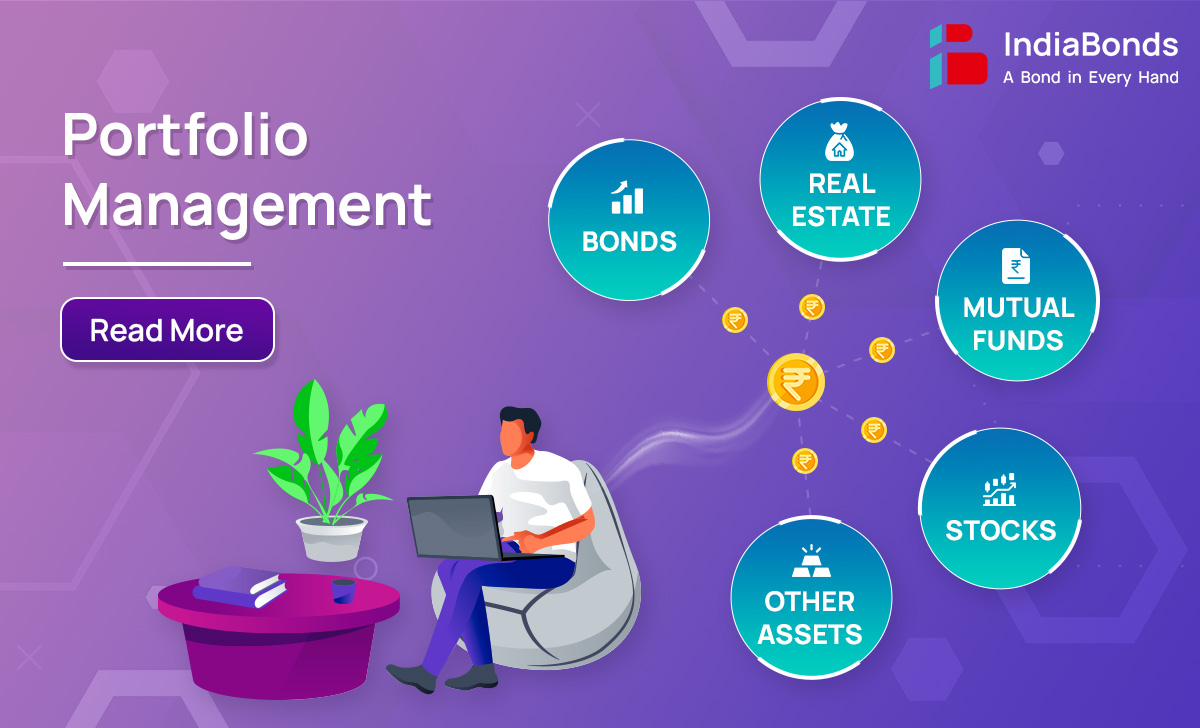
‘Don’t put all your eggs in one basket’ – this is the saying that almost every investment literature declares for investors. Nobody wants to lose their investment capital but make returns on it. Thus, investors usually invest in multiple asset classes. Further, in every asset class, the investor can also invest in different schemes and stocks. This is known as a portfolio of investments for investors. However, while investors can create their own portfolios, it involves a lot of research on their part when it comes to the selection of asset classes, schemes, stocks etc. Not every investor can afford the same!
What’s the alternative then? It’s simple! You can outsource the management of your portfolio to a professional portfolio manager. This is known as portfolio management services. This can be done as a multi-asset or a single asset like Debt Portfolio Management Service (Debt PMS). Let’s understand portfolio management and how does it work!
A portfolio is a basket of different asset classes or different financial securities of a single asset class, owned by an investor. Whenever, an investor invests in different asset classes like stocks, bonds, mutual funds, gold, real estate etc., it forms a portfolio of investments.
Simply put, portfolio management is managing an individual’s investments in order to generate maximum returns to facilitate the achievement of investment objectives. Portfolio management can either be done by the investor himself or through a professional portfolio manager. It involves understanding the investor’s financial goals and preferences, creating an investment portfolio that suits the investor’s risk appetite and managing the portfolio. It is not a one-time process but a continuous one whereby the portfolio needs to be modified considering the performance of assets, achievement of investment goals and most importantly, market situations.




Portfolio management is important for any investor who has invested in multiple asset classes. While you saw the portfolio management meaning, here are some reasons why an investor needs portfolio management:
This is one of the foremost reasons to go for portfolio management. The aim of investing is to earn lucrative returns on investment such that you can achieve your investment and financial goals. It can only be done if your portfolio is managed properly.
The aim of creating a portfolio involving multiple asset classes is to properly diversify your risk. Investing in different asset classes ensures that if one asset class poorly performs, the other asset classes compensate for the shortfall of returns. Thus, you are relieved that all assets in your portfolio do not necessarily go down at the same time.
It is necessary to periodically track the performance of the portfolio. It shows whether the investor is moving in the right direction. If not, then the reasons for the same need to be identified and the investment strategy or the portfolio needs to be altered accordingly.
It is necessary to adjust the portfolio based on various factors. One of the factors that we saw above was that the portfolio wasn’t able to perform as per investors’ expectations. Other reasons can include market factors, government policies, changes in investors’ preferences etc. This is done to ensure that the ultimate investment objective of the investor is achieved.
Following are the different types of portfolio management:
Here, the portfolio is managed actively such that the portfolio manager ensures maximum returns on the investments. There are constant changes in the portfolio including buying and selling of securities, changes in asset classes etc.
Here, the portfolio is managed as per a set benchmark and the portfolio manager is not required to actively make decisions regarding investments. For instance, in the case of a portfolio tracking index funds does not require the manager to actively make investment decisions.
Here, the portfolio is managed as per the discretion of the investors. The manager chooses the investment strategy based on the investor’s goals and risk appetite.
Here, the portfolio manager advises the investors on different choices and strategies to invest in. Then, it is upon the investor whether to accept or reject the recommendations provided by the portfolio manager.
The process of portfolio management involves a series of strategic steps that help investors optimize their investments to meet specific financial goals. Here’s a detailed breakdown of the typical steps involved:
This initial step involves identifying the investor’s financial goals, risk tolerance and investment horizon. Objectives might include retirement planning, education funding, or wealth accumulation for significant future expenditures.
This critical phase determines the mix of asset classes (e.g., stocks, bonds, real estate) in the portfolio, based on the investor’s goals, risk tolerance and the current economic environment. Proper asset allocation aims to balance risk and reward according to an individual’s specific circumstances.
Following asset allocation, this step involves selecting specific investments to fill out the previously determined asset classes. This could entail choosing individual stocks, bonds, mutual funds, or other securities that align with the strategic asset mix and investment objectives.
Continuous oversight of the portfolio is crucial to maintain alignment with the investor’s goals and to evaluate its performance relative to set benchmarks. This step helps identify any investments that are underperforming or diverging from expected trends.
Over time, the actual asset allocation of a portfolio can drift away from its target due to differing returns from various assets. Regular rebalancing restores the original asset allocation, thereby maintaining the portfolio’s intended risk profile and investment strategy.
Periodically, the portfolio’s overall performance should be evaluated in relation to its investment goals. This review can help determine whether the investment strategy needs any modifications to enhance returns or reduce risks.
Based on the outcomes of performance reviews, adjustments might be necessary to better position the portfolio for future growth or to realign it with changing financial goals and market conditions. This could include changing asset allocations, modifying investment strategies, or updating the overall investment objectives.
Each step in the portfolio management process is designed to ensure that investments are well-positioned to achieve the desired financial outcomes while managing risk appropriately. This structured approach facilitates systematic investment growth and supports the attainment of long-term financial objectives.
Portfolio management is important to ensure that you keep moving forward toward achieving your investment goals. Investors who could spare enough time to research and invest manage their portfolios themselves while others go for professional portfolio management services. In either case, it is important that the person managing the portfolio has adequate knowledge and skills to generate returns and facilitate the achievement of investment objectives.
A. Portfolio management helps with capital appreciation, risk optimisation and improving the overall efficacy of the financial assets owned by an investor.
A. Any investor who is new to the investment market, does not have enough knowledge about the workings and fluctuations of the market or does not have the time to self-learn on financial opportunities, should opt for portfolio management.
A. When preparing your portfolio, you need to keep in mind your investment goals, investment horizon and risk appetite in mind. Invest in those asset classes that you truly understand. Further, you should aim to maximize your returns while minimizing your risk at the same time.
A. Ideally there are 4 types: Active, Passive, Discretionary and Non-Discretionary.
A. These typically include goal setting, asset selection, asset allocation, implementation, monitoring, rebalancing and reviewing.
A. These might include asset allocation, diversification, rebalancing, use of benchmarks and risk management.
A. Portfolio management definition involves strategically managing an investor’s portfolio of assets to achieve specific investment goals effectively.
Disclaimer: Investments in debt securities/ municipal debt securities/ securitised debt instruments are subject to risks including delay and/ or default in payment. Read all the offer related documents carefully